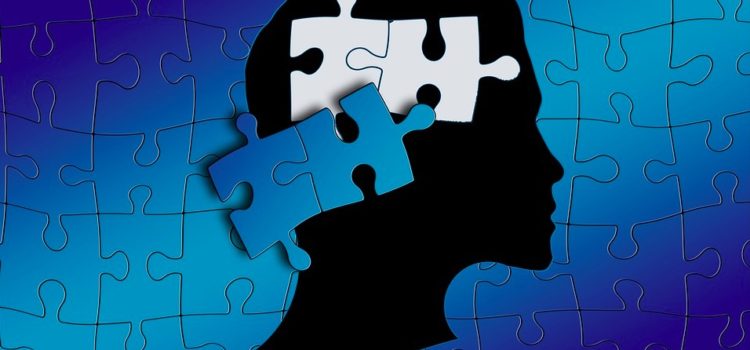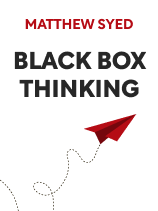

This article is an excerpt from the Shortform book guide to "Black Box Thinking" by Matthew Syed. Shortform has the world's best summaries and analyses of books you should be reading.
Like this article? Sign up for a free trial here .
What is the book Black Box Thinking about? How does black box thinking drive human progress?
In the book Black Box Thinking, the author argues that collecting data, analyzing data, and learning from failures drive human progress. The idea comes from airlines that use black boxes as in-flight recording systems.
Keep reading for more about the book Black Box Thinking.
Overview of the Book Black Box Thinking
In the book Black Box Thinking, Matthew Syed argues that learning from failure drives human progress. It’s how individuals and organizations develop, innovate, and improve. Airlines exemplify this in using black boxes—an in-flight recording system—to collect data, analyze airline crashes, and learn how to improve.
However, we still fail to learn from our mistakes in multiple key areas—from health care to criminal justice—and this endangers lives and resources. Overcoming the cultural and systemic barriers to learning from failure can prevent mistakes and create more effective organizations. More examples of this can be found in the book Black Box Thinking.
Syed is an award-winning journalist, author, and former Olympian for Great Britain’s table tennis team. His sporting career inspired the focus of his writing, which includes four books on mindset, performance, growth, and creativity. Syed also consults with organizations to build cultures and systems that enable them to learn from failure.
In this guide, we explain Syed’s argument that failure drives learning and explore two types of institutions: Those that learn from failure—including aviation, athletics, and science—and those that don’t—such as public hospitals and the court system. We then discuss how to shift mindsets and systems to turn an organization into a learning-oriented institution.
Two Institutional Styles
The book Black Box Thinking discusses two institutional styles. In modern society, some of our institutions progress by learning from failure, but certain major institutions neglect this opportunity and hinder progress.
1. Learning-Oriented Institutions: These organizations—including medicine, the airline industry, athletic organizations, and some businesses—use their failures to improve their operations and innovate solutions to tough problems. For example, a successful football team holds post-game retrospectives to review what went well and what didn’t, and they use that insight to improve their game plan.
(Shortform note: In The Fifth Discipline, Peter Senge outlines five disciplines to achieve a “Learning Organization”: 1) Create a shared vision to align leadership and staff, 2) Use systems thinking to understand your organization holistically, 3) Clarify your existing mental models and stay open to adapting them, 4) Create teams that learn together and embrace honest mistakes, and 5) Help employees develop personal mastery by training the subconscious mind to handle complexity.)
2. Failure-Averse Institutions: These organizations neglect to learn from their failure, and thereby miss out on opportunities to improve. Their failure-averse cultures preclude the acknowledgment and assessment of mistakes, and their systems lack mechanisms to process and learn from those mistakes. As examples, Syed highlights health care and the courts.
(Shortform note: In Too Much and Never Enough, Mary Trump, the niece of Donald Trump, characterizes his administration as failure-averse. Through analysis of Trump family history and her own experiences, she argues that because he’s never faced consequences for his mistakes or wrongdoings, he can’t conceive that he could be wrong about anything. Any institution with a leader who’s so apt to cast blame becomes failure-averse, since errors go unlearned.)
Learning-Oriented Institutions Grow Through Failure
The first institutional style discussed in the book Black Box Thinking is a learning-oriented institution. Syed explains that learning-oriented organizations have two things in common: Cultures that promote learning from failure and systems that make use of those mistakes.
Element #1: The Culture of Learning-Oriented Institutions
Syed explains that learning-oriented organizations view failure as an opportunity to grow. Individuals and teams feel comfortable making mistakes, reporting them, and learning from them. This mindset exists on two levels: the individual, and the organizational.
On the individual level, you need the desire to improve—to work hard, fail, and try again—plus the tenacity to persist through numerous mistakes and the humility to admit and learn from them. Think of a professional musician: A cellist spends thousands of hours training her craft precisely by making mistakes, adjusting, and pressing onward.
(Shortform note: In Tribal Leadership, Dave Logan and coauthors argue that in large corporate workplaces, employees lose motivation when they feel like cogs in a machine. To build a strong organizational culture, Logan recommends helping each individual develop confidence in their abilities. To do this, point out his strengths and give him tasks that stretch them just a bit. By completing these tasks, he’ll better develop self-esteem and may seek additional responsibilities.)
At the organizational level, you need an open and fair culture that incentivizes learning from failure. When people feel that they’ll be rewarded for failing upward, they’ll happily do so. The cellist doesn’t fear messing up in practice because professional musicians all understand that mistakes are part of learning. Her culture embraces mistakes; they know skill is built on a mountain of errors.
(Shortform note: Syed’s description of an effective organizational culture evokes the Stage 4 cultural stage in Tribal Leadership. Dave Logan explains that at Stage 4, teams focus on values, vision, and alignment more than top-down management and control. The tribe judges others’ actions according to those values, allowing for experimentation and failure so long as the mistakes are made in pursuit of their shared vision. This encourages productive mistakes—those which further the tribe’s goals.)
Element #2: The Systems of Learning-Oriented Institutions
With a failure-embracing culture in place, you need a system that makes use of failure. Syed argues that this system is an iterative method that he calls black box thinking. Here’s how it works:
1. Take action. The organization acts from its best knowledge and gathers data constantly. Measuring their operations gives analysts data to learn from when failures happen. In aviation, each plane is equipped with two black boxes. One records details of the plane’s positioning, trajectory, and functions (landing gear, lights, and so on), and the second records human data, such as conversation in the cockpit.
2. Analyze failures. When an error occurs, the organization uses its data to look for the cause of the error—reflecting on what went wrong and why. For example, airlines use independent investigators who examine data from the black boxes and analyze the circumstances of the crash. When they know what went wrong, they give that information to the airline.
3. Formulate fixes. Next, the organization designs a practical, scalable solution to the problems identified. Then, Syed says, they test these solutions to iron out any flaws before implementing at scale. After identifying that pilots struggled to focus on long flights, airlines tested simple programs to redistribute the workload between the pilots and co-pilots. Once they’d smoothed out any flaws, they implemented it more broadly.
4. Repeat. Finally, these organizations integrate what they’ve learned into their systems. Each time they do this, they accumulate a better understanding of what doesn’t work and what does. Then, they return to step one and keep learning.
Failure-Averse Institutions Waste Lives and Resources
The second institutional type discussed in the book Black Box Thinking is failure-averse. In the bigger picture, the institutional failure to improve is morally irresponsible, according to Syed. First, a stagnant institution is a missed opportunity to develop better systems that support life and improve our world. Each time a learning opportunity goes unexploited, progress slows.
(Shortform note: Jean-Jacques Rousseau, a 17th-century Enlightenment thinker, argued that if civilization progresses solely through scientific rationality, our morals will degrade. In his Discourse on the Sciences and Arts, Rousseau points to ancient Athens, where the flourishing sciences and arts led to a society focused on leisure, luxury, and decadence. Advanced scientific knowledge, he says, isn’t intrinsically moral, so if we neglect virtue in favor of scientific progress, we’ll end up with a materially advanced but morally bankrupt society.)
Second, mistakes can have life-and-death consequences. For example, consider the health care system: Preventable errors in the US medical system cause hundreds of thousands of deaths annually—making them the US’s third largest cause of death.
(Shortform note: To expand on Syed’s data, The Peterson Center Health System Tracker reveals that, while preventable errors remain problematic, many causes of death have declined: Mortality rates for infant care, respiratory diseases, diseases of the circulatory system, and cancers have all fallen since the 1980s.)
Failing isn’t the problem in and of itself. Rather, the problem is neglecting to learn from those failures. When organizations fail to report and learn from their mistakes, they perpetuate patterns of failure that put lives at risk.
In contrast to courts and hospitals, the airline industry has learned from the hundreds of lives lost in historical crashes. They analyze the failures, extract takeaways, and implement changes. Because of this, flying is now incredibly safe.
(Shortform note: In The Art of Learning, tai chi world champion Josh Waitkzin argues that we improve only as quickly as we learn from our mistakes. He suggests that if you never repeated a mistake—learning from it after one instance—you’d grow incredibly fast. While this is difficult in practice, Waitzkin advises that setting aside your ego can help. If we’re too focused on appearing competent or we’re embarrassed to admit mistakes, we’ll never learn.)

———End of Preview———
Like what you just read? Read the rest of the world's best book summary and analysis of Matthew Syed's "Black Box Thinking" at Shortform .
Here's what you'll find in our full Black Box Thinking summary :
- How an organization’s culture and systems either promote or prevent learning
- The steps for learning from failure in our complex world
- How to shift mindsets around failure to promote a learning-oriented institution






